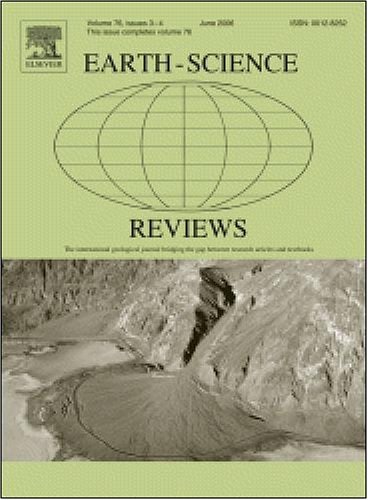Spatial distribution and formation mechanisms of high‑iodine groundwater throughout China
IF 10
1区 地球科学
Q1 GEOSCIENCES, MULTIDISCIPLINARY
引用次数: 0
Abstract
High‑iodine groundwater poses a severe threat to the health of millions of people worldwide, especially in China. Understanding iodine mobilization in aquifers is crucial for sustainable exploitation of groundwater resources. In this Review, we summarize the spatial distribution characteristics of high‑iodine groundwater across China, elucidate the sources and hosts of iodine, and discuss the hydrogeological and biogeochemical processes responsible for iodine enrichment in aquifers. High‑iodine groundwater is widely distributed in inland semi-arid/arid basins/plains and coastal areas, occurring in both shallow and deep layers with iodide as the dominant iodine species. Terrestrial/marine-derived sedimentary organic matter and organic matter-bound iron minerals are the primary sources of iodine. The mobilization, transformation and enrichment of iodine in aquifers are controlled by both hydrogeological processes (i.e., evaporation concentration, compaction release and burial dissolution) and biogeochemical processes, including iodate reduction by iodate-reducing bacteria, Fe(III)-reducing bacteria, sulfate-reducing bacteria and anaerobic methane-oxidizing microorganisms, and organic iodine degradation/dehalogenation. Future studies should focus on the investigation of radioiodine-contaminated groundwater, identification and quantification of organic iodine species, characterization of anaerobic oxidation of methane coupled with iodate reduction, iodine oxidation and methylation, and cost-effective remediation of high‑iodine groundwater.
全国高碘地下水的空间分布和形成机制
高碘地下水对全世界数百万人的健康构成严重威胁,特别是在中国。了解碘在含水层中的迁移对地下水资源的可持续开发至关重要。本文综述了中国高碘地下水的空间分布特征,阐明了碘的来源和寄主,并讨论了含水层中碘富集的水文地质和生物地球化学过程。高碘地下水广泛分布于内陆半干旱/干旱盆地/平原和沿海地区,存在于浅层和深层,碘化物为优势碘种。陆相/海相沉积有机质和有机质结合的铁矿物是碘的主要来源。含水层中碘的动员、转化和富集受水文地质过程(即蒸发浓度、压实释放和埋藏溶解)和生物地球化学过程的控制,包括碘酸还原细菌、铁(III)还原细菌、硫酸盐还原细菌和厌氧甲烷氧化微生物对碘酸盐的还原以及有机碘的降解/脱卤作用。未来的研究应集中在放射性碘污染地下水的调查、有机碘种类的鉴定和定量、甲烷厌氧氧化与碘酸盐还原、碘氧化和甲基化耦合的表征以及高碘地下水的成本效益修复等方面。
本文章由计算机程序翻译,如有差异,请以英文原文为准。
求助全文
约1分钟内获得全文
求助全文
来源期刊

Earth-Science Reviews
地学-地球科学综合
CiteScore
21.70
自引率
5.80%
发文量
294
审稿时长
15.1 weeks
期刊介绍:
Covering a much wider field than the usual specialist journals, Earth Science Reviews publishes review articles dealing with all aspects of Earth Sciences, and is an important vehicle for allowing readers to see their particular interest related to the Earth Sciences as a whole.
 求助内容:
求助内容: 应助结果提醒方式:
应助结果提醒方式:


